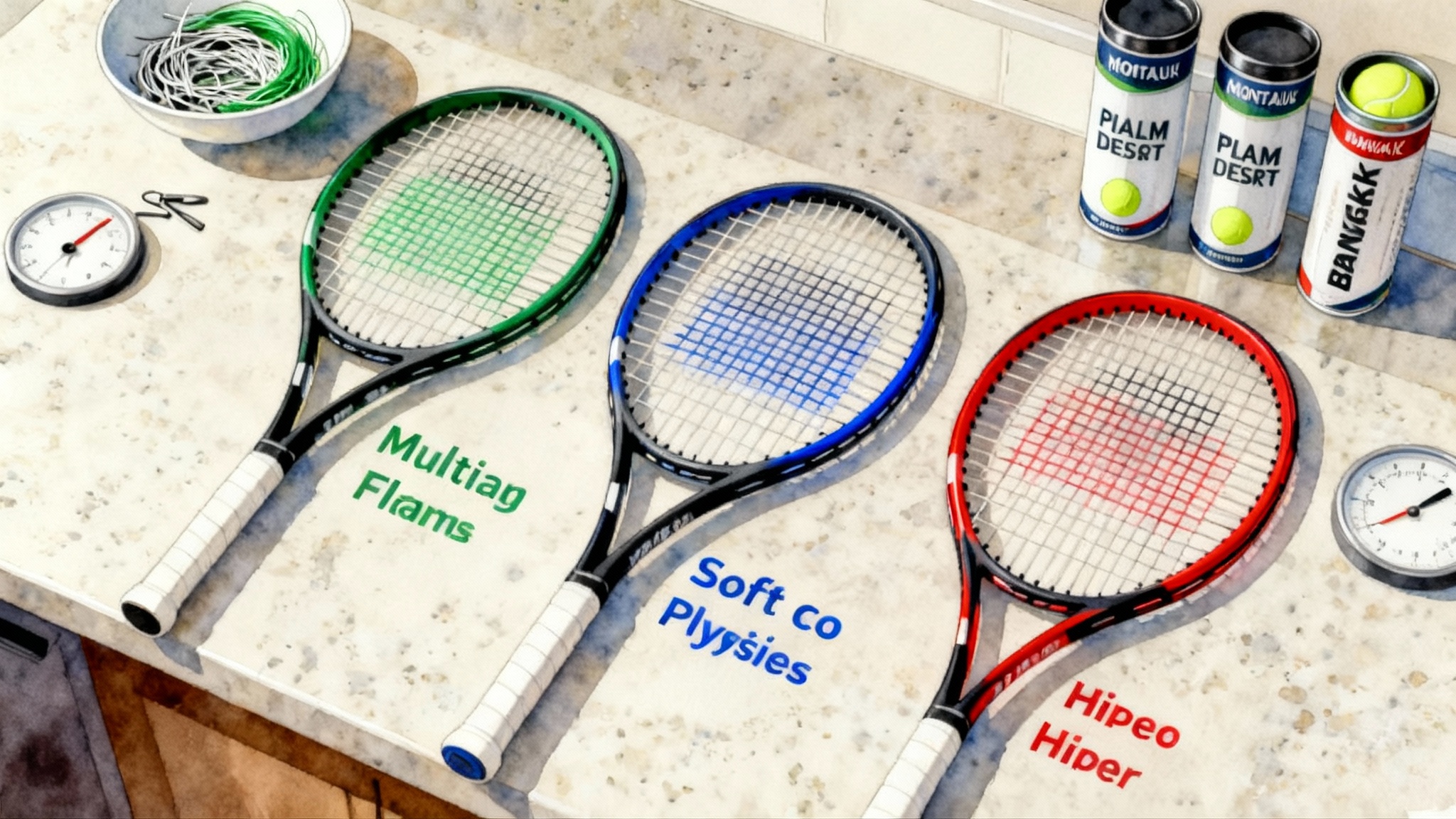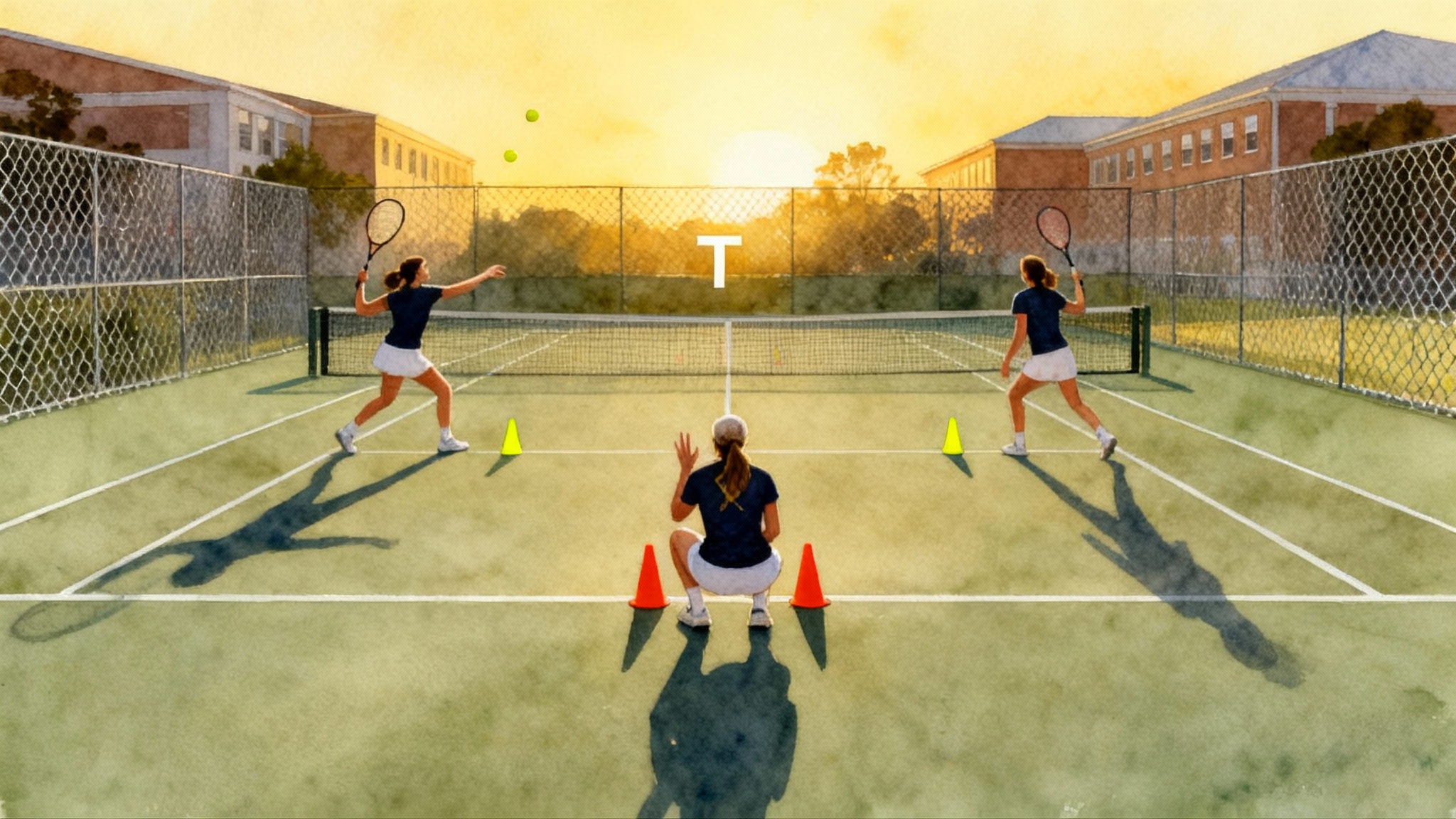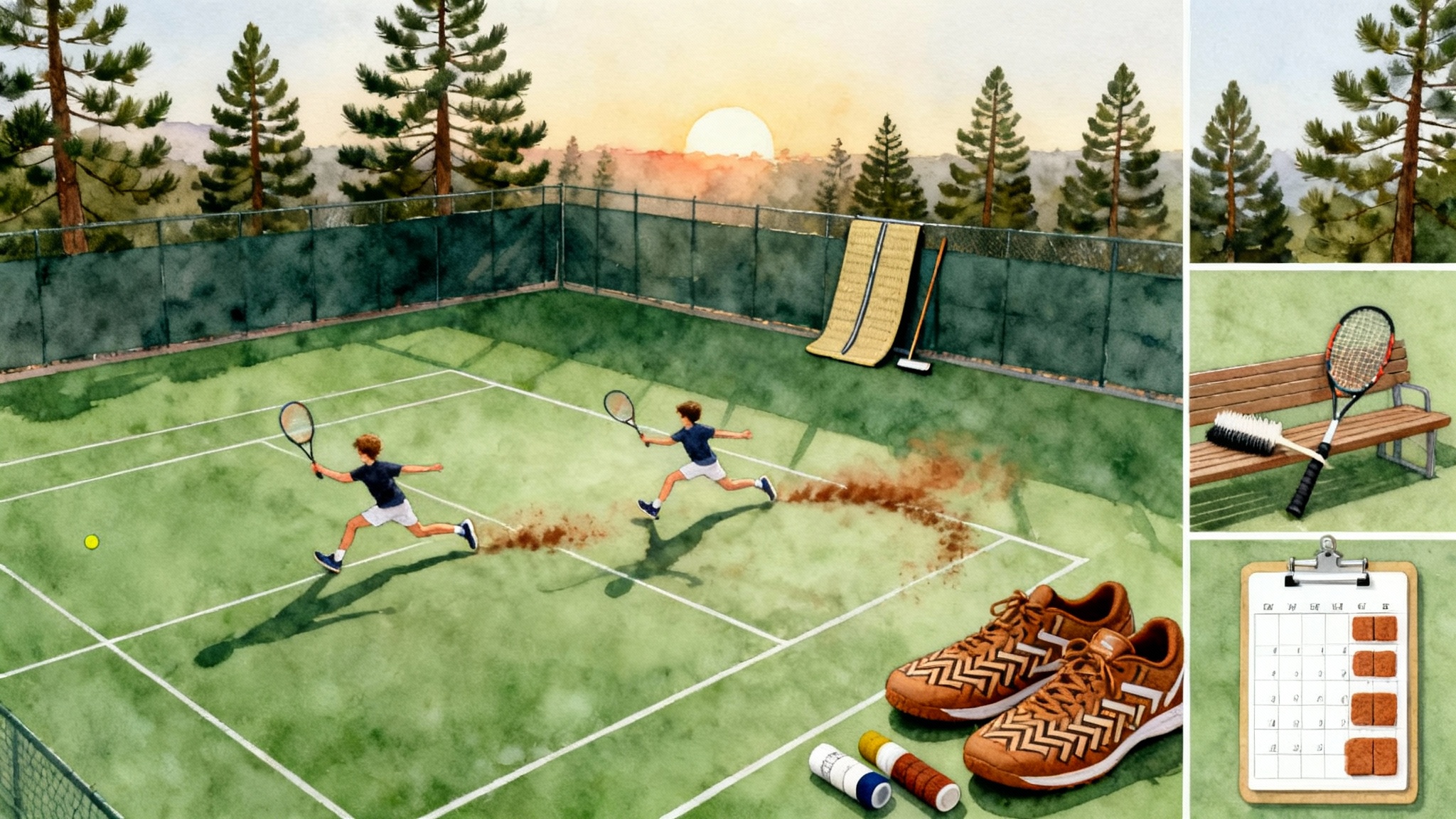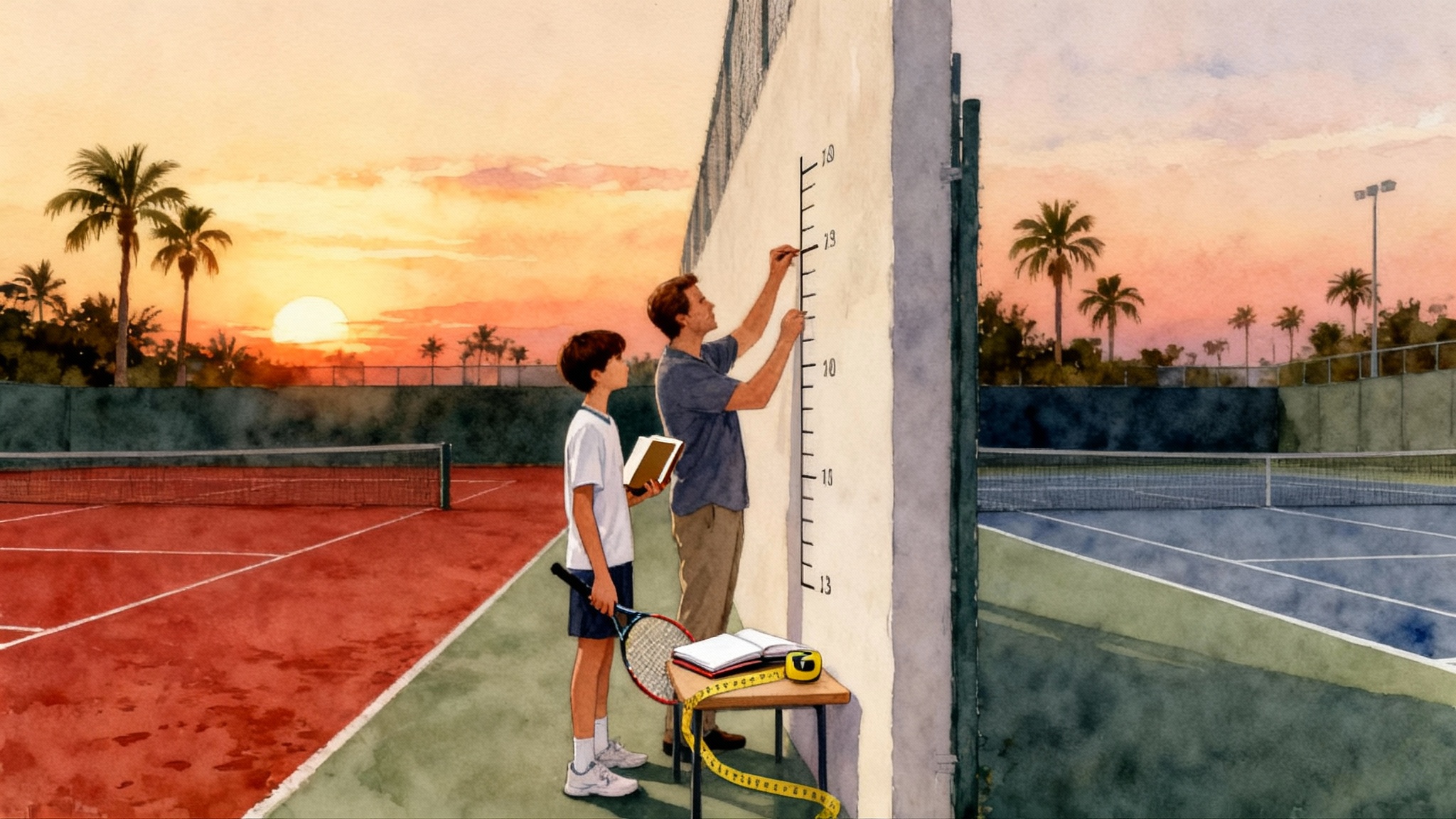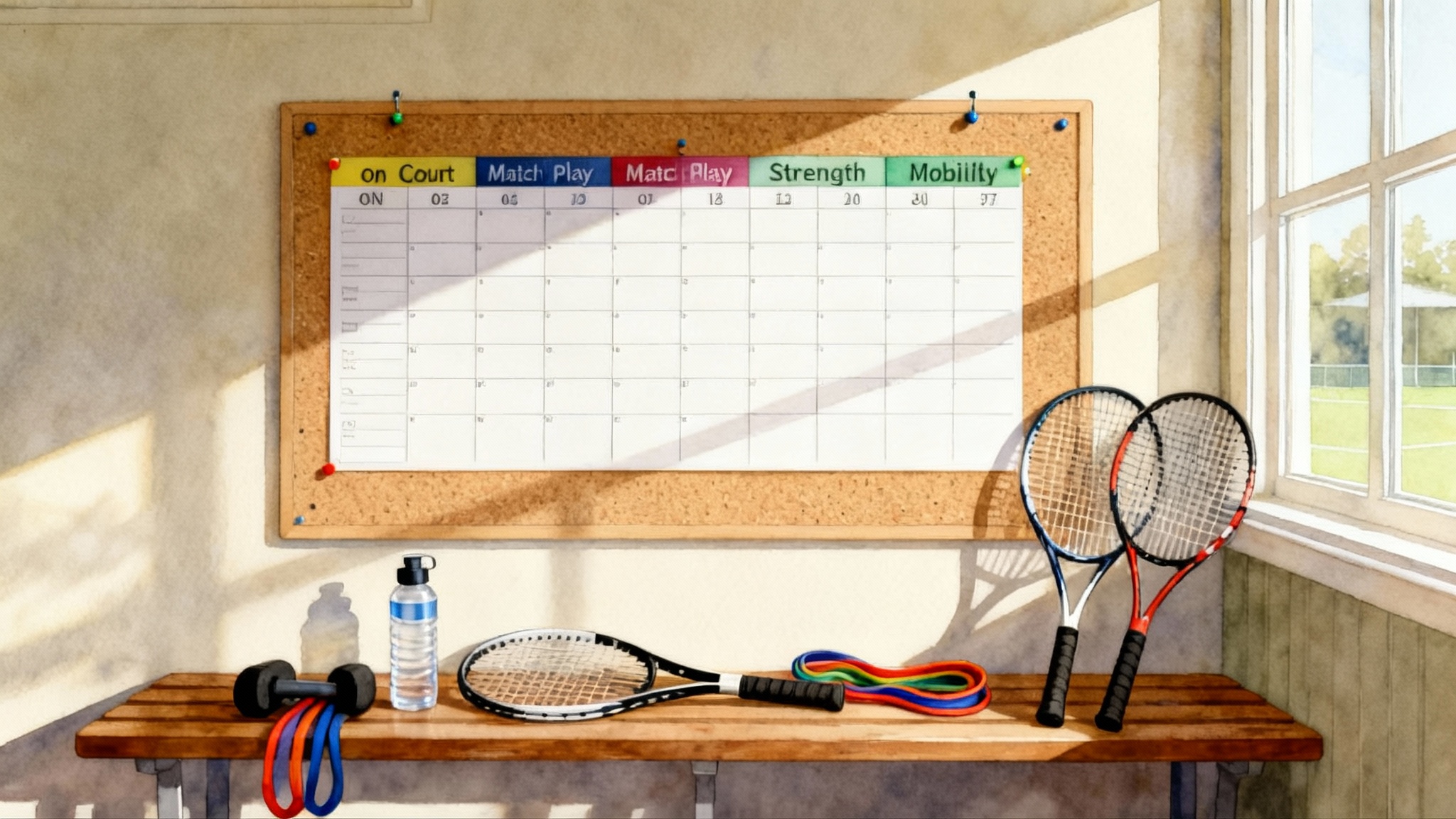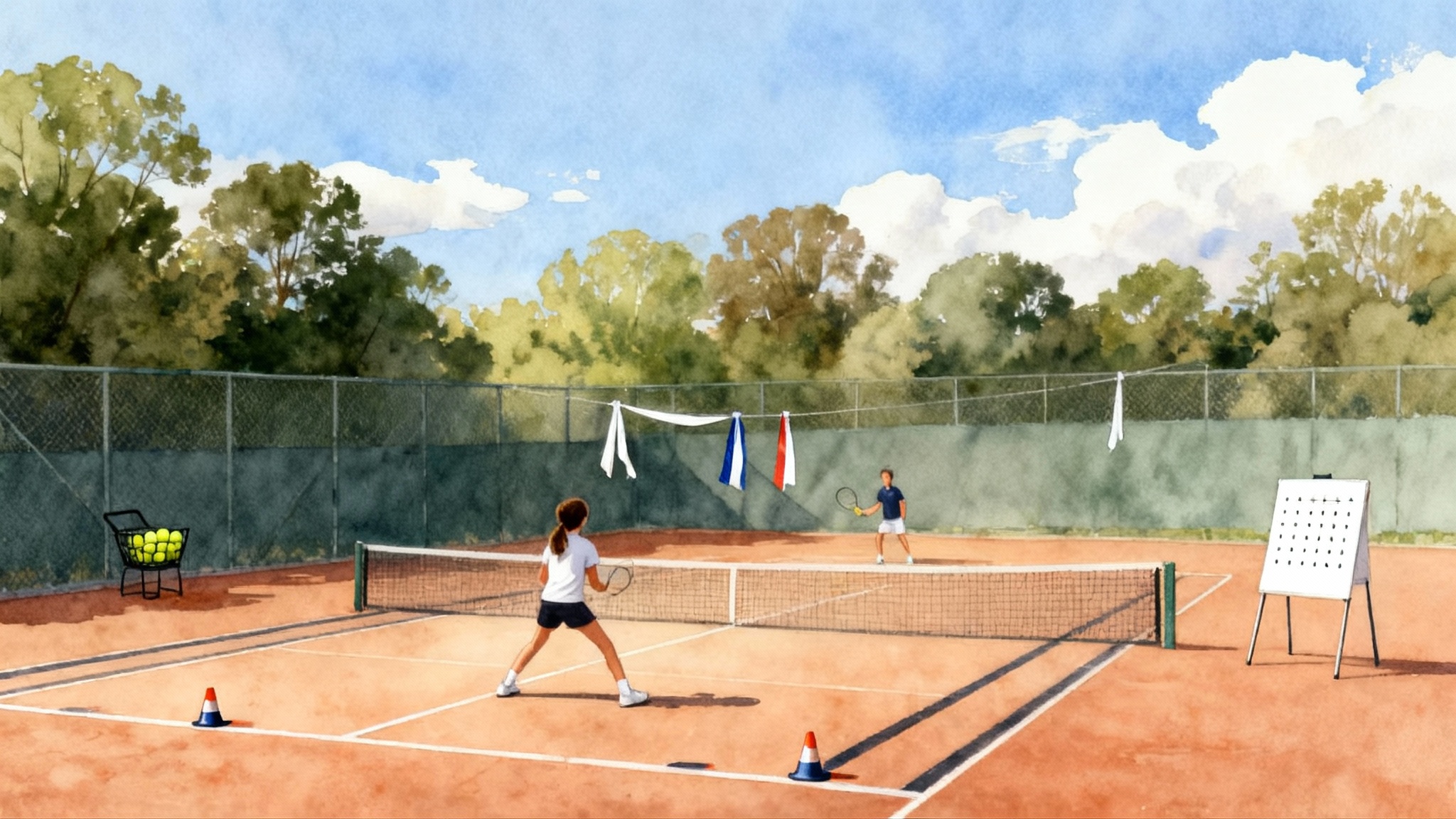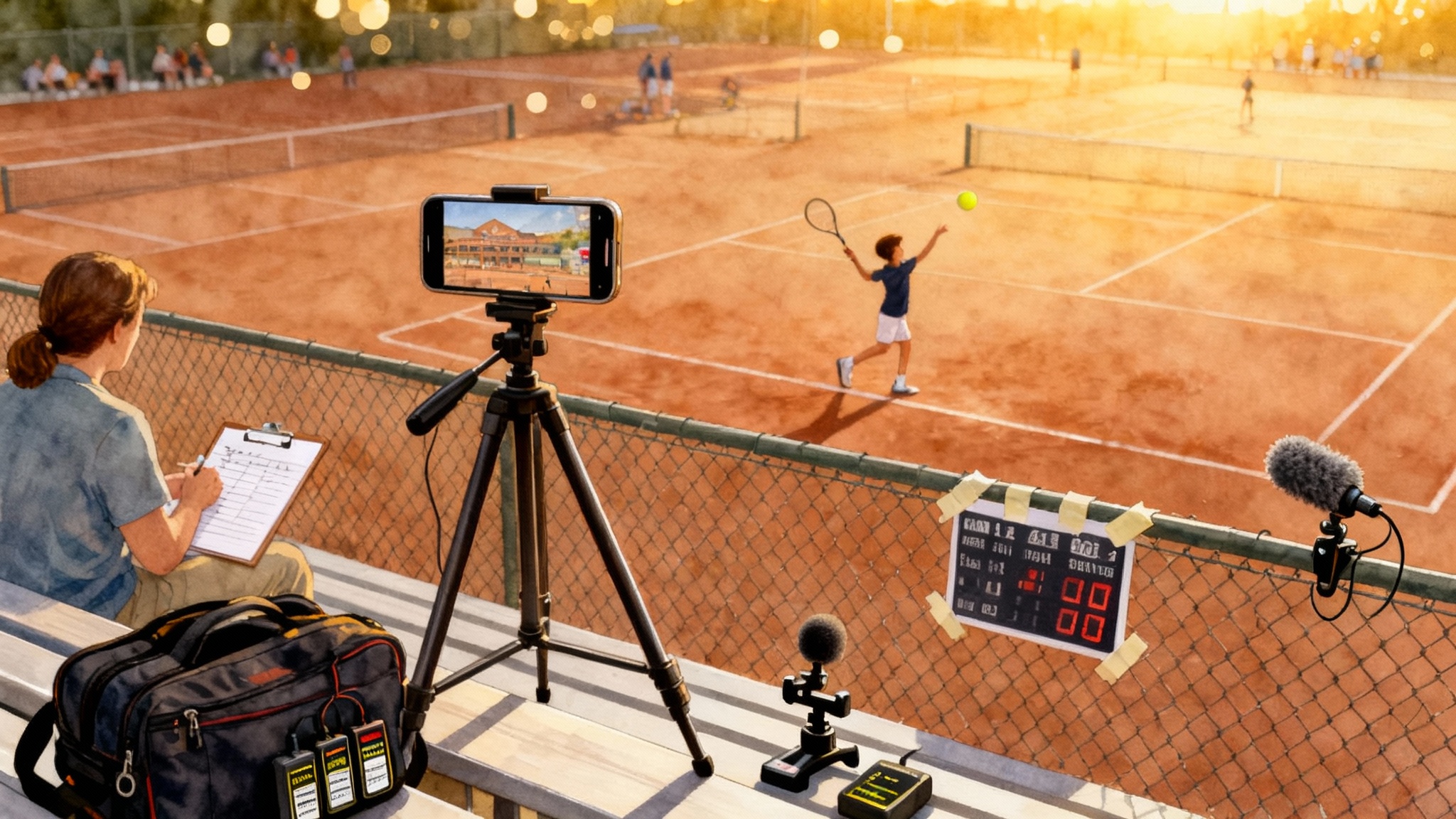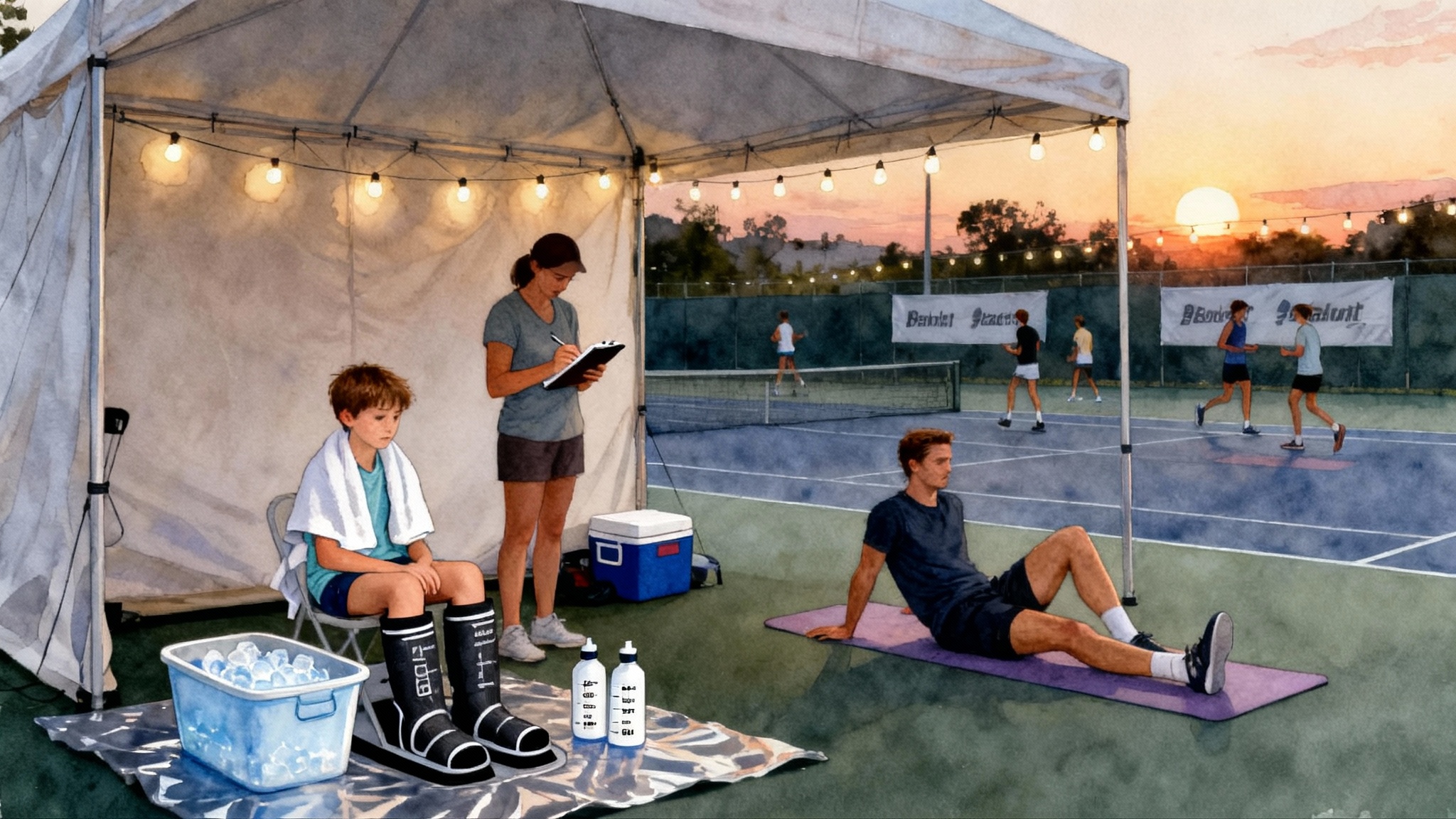Serve Speed Without Arm Pain in 2025: 8-Week Kinetic Chain Plan
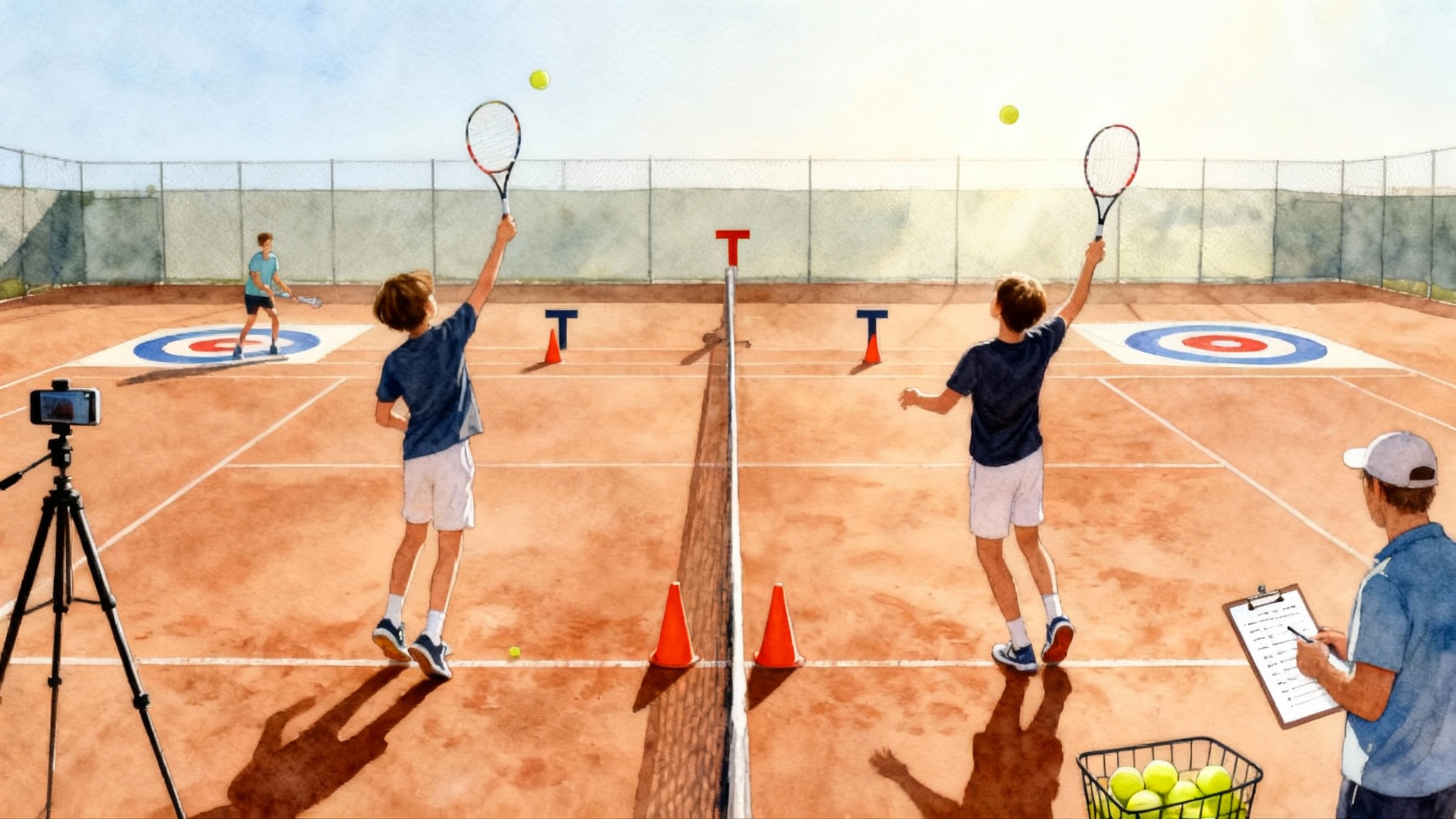
Why speed without arm pain is the 2025 serve unlock
Faster serves win more free points, set up easier first balls, and keep pressure on returns. Yet most players still chase speed with their arm. That path is short and painful. The modern serve is a ground-up sequence: legs load, hips and trunk unwind, the shoulder and arm simply transmit force that was created lower down. Think of it like a whip. The handle moves first and the tip moves last. You will get real speed when the big engines of the lower body and trunk do the heavy lifting.
This article gives you an eight week plan that improves serve speed and accuracy while capping workload so your shoulder and elbow stay healthy. It blends on-court drills with off-court strength and mobility, gives you simple weekly progress checks you can run with a phone, sets age specific volume limits, and flags symptoms that mean stop. You will also see how Phoenix Tennis Academy runs biomechanics-informed assessments and how to book a serve assessment if you want expert eyes.
How this plan works
- Two tracks serve the same purpose. Juniors and adults follow the same structure with different volumes and loads.
- You will train three days per week on court and two days per week off court. A fourth light day is optional for mobility and easy serves only.
- Each week includes a short progress check using your phone camera and simple speed proxies. No radar required.
- Every serve session ends the moment you hit a red flag. Your plan should add speed, not medical bills.
- If you need help managing overall court time, see our weekly tennis plans by age.
The 8-week kinetic chain plan
Below are weekly blocks. For each week you get on-court drills, off-court work, volume caps, and a progress check. Rest 20 to 30 seconds between serves and 2 to 3 minutes between sets. Use new or lightly used balls for consistent feedback.
Week 1: Build the base
- On court
- Shadow sequence 3 x 10 reps: stance, load, trophy, pronation finish. No ball. Film one set from behind.
- Serve from the knees 3 x 8: kneel near baseline to remove the leg drive and learn arm path and pronation. Land on the front shin, do not arch the lower back.
- Half serves to the T 4 x 6: abbreviated motion from a narrow base, focus on a tall reach and smooth rhythm.
- Off court
- Mobility: ankle rocks 2 x 10 each, hip flexor stretch 2 x 30 seconds each, thoracic spine open books 2 x 8 each.
- Strength: split squat 3 x 8 each, hip hinge with light dumbbells 3 x 8, band external rotation 3 x 12, scapular wall slides 2 x 10.
- Volume caps
- Ages 9 to 12: 30 total serves per session, 2 sessions per week.
- Ages 13 to 15: 45 serves per session, 2 to 3 sessions per week.
- Ages 16 to 18: 60 serves per session, 3 sessions per week.
- Adults: 60 to 75 serves per session, 3 sessions per week.
- Progress check
- Phone behind baseline, centered on the server, lens at about chest height. Record 5 serves in standard video at 60 frames per second if possible. Check for a tall spine at trophy and a relaxed hand at finish.
Week 2: Grip, toss, and tilt
- On court
- Continental grip check: rally with serves at 50 percent to feel a neutral wrist. 2 x 10 to each box.
- Toss ladder: place three targets along the baseline. Land toss at the same point relative to your lead foot. 3 x 6.
- Load and tilt drill: shift 60 percent of weight to back leg, pelvis turns a little, chest tilts up without arching the low back. 4 x 5 shadow reps then 4 x 5 half serves.
- Off court
- Mobility: foam roll lats 2 x 30 seconds each, couch stretch 2 x 30 seconds each.
- Strength: side plank 3 x 20 to 30 seconds each, anti-rotation press 3 x 10 each, calf raises 3 x 12.
- Volume caps unchanged from Week 1.
- Progress check
- From the side at service line, record 5 serves. Look for the tossing arm to stay up through knee extension, then fold only after the body rises. If your tossing arm drops early, reduce speed and rehearse with shadow reps.
Week 3: Leg drive and timing
- On court
- Heel pressure drill: feel weight into the back heel in the load, then push the ground away. 3 x 6 no-ball jumps, then 4 x 6 serves at 60 percent.
- Target triangles: three cones in each box. Aim small, miss small. 5 x 5 serves alternating deuce and ad.
- Off court
- Mobility: thoracic spine rotations 2 x 8 each, ankle dorsiflexion test and stretch 2 x 30 seconds each.
- Strength: rear-foot elevated split squat 3 x 6 each, hip hinge 3 x 8, band pull-aparts 3 x 12, forearm pronation and supination with light hammer 2 x 12.
- Volume caps
- Add 10 serves per session for ages 13 and up if no soreness the day after. Juniors 9 to 12 hold steady.
- Progress check
- Simple speed proxy: count frames from impact to back fence contact in slow motion. Distance is roughly 98 feet from contact to fence on a typical court. Miles per hour is approximately 67 divided by time in seconds. If it takes 0.9 seconds, 67 divided by 0.9 is about 74 miles per hour. This is a rough measure, but it tracks progress.
Week 4: Pronation, shoulder health, accuracy under control
- On court
- Pronation throws: throw a light foam ball with a loose wrist focusing on forearm rotation, not wrist snap. 3 x 8 each arm.
- Serve plus first ball: serve at 70 percent, then hit a controlled forehand to the open court. 5 x 4 per side.
- Accuracy game: must hit 3 of 5 to the T before moving to body, then wide. Keep pace moderate.
- Off court
- Mobility: lat stretch on wall 2 x 30 seconds each, thoracic extension over foam roller 2 x 30 seconds.
- Strength: single leg Romanian deadlift 3 x 6 each, half kneeling anti-rotation press 3 x 10 each, external rotation at 90 degrees abduction 3 x 10. For comfort at impact, review safe strings and tension setups.
- Volume caps
- Ages 9 to 12: keep 30 to 35 serves per session.
- Ages 13 to 15: 55 to 60 serves per session.
- Ages 16 to 18: 65 to 70 serves per session.
- Adults: 70 to 85 serves per session.
- Progress check
- Accuracy ratio: number of first serves that land within a racket head of the intended cone divided by total first serves. Target 50 percent this week at training pace.
Week 5: Rhythm and energy transfer
- On court
- Three tempo serves: slow up, fast through, smooth finish. Say it quietly to set rhythm. 3 x 5.
- Step-in serves for rhythm: start with feet closer, take a small step as you toss, then serve. 4 x 5.
- Velocity window: alternate 60 percent and 80 percent serves. 5 x 4. The point is learning to scale effort without losing mechanics.
- Off court
- Mobility: ninety ninety hip flows 2 x 6 each, thoracic rotation with reach 2 x 6 each.
- Strength: trap bar deadlift or kettlebell deadlift 4 x 5 at moderate effort, split stance overhead press with dumbbells 3 x 6 each, band face pulls 3 x 12.
- Volume caps
- Maintain Week 4 numbers. If elbows or shoulders feel thick or achy the next morning, cut volume by 25 percent for two sessions and add an extra mobility day.
- Progress check
- Side angle slow motion at 120 to 240 frames per second if available. Watch for the legs to extend before trunk rotation peaks. If trunk rotates too early, rehearse load and tilt drill from Week 2.
Week 6: Serve patterns and landing mechanics
- On court
- Deuce box sequence: T, body, wide in sets of three. 5 sets at 75 to 80 percent.
- Ad box sequence: wide, body, T in sets of three. 5 sets at 75 to 80 percent.
- Landing check: finish balanced on the front leg with chest over knee and back foot behind you. 4 x 3 holds for 3 seconds.
- Off court
- Mobility: calf and Achilles stretch 2 x 30 seconds each, sleeper stretch 2 x 30 seconds each.
- Strength and power: medicine ball scoop toss 4 x 4 each, rotational shot put 4 x 4 each at moderate effort, single leg hops in place 3 x 6 each.
- Volume caps
- Juniors 13 and up and adults may add 5 to 10 serves if symptom free. Younger juniors stay steady.
- Progress check
- Speed proxy number two: bounce depth. Draw a chalk line two racket lengths from the service line. Record how many serves bounce past the line while still hitting your intended target. Try to add two more past the line this week at the same accuracy ratio.
Week 7: Top speed day and recovery day
- On court
- Warm up as usual. Then two clusters of 8 serves at your fastest sustainable pace with 30 seconds between serves and 5 minutes between clusters. Follow with 15 controlled serves to your best target.
- Finish with 8 second serve kickers per side at 60 to 70 percent. Quality over velocity.
- Off court
- Mobility and recovery: long exhale breathing 3 x 5 breaths, soft tissue work on lats and pec minor 2 x 30 seconds each, easy band external rotation 2 x 15.
- Strength: keep it light and crisp. Goblet squat 3 x 6, horizontal pull 3 x 8, farmer carry 3 x 20 meters.
- Volume caps
- No increases. This is a test of quality, not a jump in count.
- Progress check
- Use the time-to-fence formula again. If you added more than 3 miles per hour versus Week 3, do not add volume next week. Maintain and solidify accuracy.
Week 8: Blend power and precision
- On court
- Two serve games: 10 point game against yourself. First serve must land on your cone to count. If it misses the cone but lands in, count one point. If it misses in full, minus one. Play one game per box.
- Serve plus return pattern rehearsal with a partner or ball machine: aim T to deuce, expect forehand to your backhand side, then play one neutral ball. 6 rounds.
- Off court
- Mobility: pick three stiff areas and spend 5 minutes total. Thoracic spine, lats, hip flexors are common.
- Strength: repeat your best three lifts of the cycle at lower load. Leave two good reps in the tank.
- Volume caps
- All groups hold steady or drop by 10 percent. Week 8 locks gains without chasing more.
- Progress check
- Three camera angles for your final audit: behind baseline, side at service line, and front diagonal from opposite service box. Watch the tossing arm stay up through leg drive, see shoulder over shoulder tilt, and a relaxed pronation finish.
Age specific serve volume limits at a glance
- Ages 9 to 12
- Per session: 30 to 35 serves
- Per week: 60 to 90 serves across 2 to 3 sessions
- Ages 13 to 15
- Per session: 45 to 60 serves
- Per week: 90 to 150 serves across 2 to 3 sessions
- Ages 16 to 18
- Per session: 60 to 75 serves
- Per week: 120 to 180 serves across 2 to 3 sessions
- Adults
- Per session: 60 to 90 serves
- Per week: 150 to 200 serves across 2 to 3 sessions plus one easy accuracy day
These are ceilings, not targets. If your accuracy drops below 50 percent, if the elbow or shoulder feels tight, heavy, or hot, or if your hand tingles, stop early.
Red flag symptoms and when to stop
Stop the session and switch to mobility and light band work if you notice any of the following:
- Pain rated above 3 out of 10 during the motion or the follow through
- Night pain that wakes you or any morning stiffness that lasts more than 24 hours
- A sharp pinch at the top of the shoulder with the arm overhead
- Numbness or tingling in the hand or fingers
- Loss of accuracy of more than 20 percent compared with your baseline
If symptoms persist into the next day, rest 48 hours and consult a licensed medical professional. Training through red flags rarely pays off.
Weekly progress checks in detail
- Phone setup
- Height: about chest level
- Distance: behind baseline at center mark for the rear view; on the service line for the side view; just inside the opposite service box for the front diagonal
- Frame rate: 60 frames per second minimum, 120 to 240 frames per second preferred
- Stabilize: rest the phone on a chair or tripod and turn on gridlines
- Simple speed proxies
- Time to fence method: record in slow motion, count the frames or use the time stamp from racquet-ball impact to back fence touch. Miles per hour is about 67 divided by time in seconds across a typical 98 foot path. The absolute number is rough, but your week to week change is meaningful.
- Bounce depth method: draw a line two racket lengths past the service line. Track how many serves bounce past the line at your chosen target. Keep the same ball type and conditions for fair comparisons.
- Accuracy checkpoints
- Place cones or small towels on T, body, and wide targets. Record makes versus attempts. A good training ratio is 6 out of 10 at 70 to 80 percent effort.
The Phoenix Tennis Academy model in practice
Phoenix Tennis Academy combines simple court drills with motion capture grade eyes. You can copy their approach with a phone and a clear checklist.
- Three checkpoint video review
- Loading: rear hip stacks inside the foot and the pelvis turns slightly as knees flex. Tossing arm rises without sway.
- Trophy: forearm relaxed, elbow below the shoulder line, chest tilts up without low back arch. Toss stays in front of the lead hip.
- Contact: legs extend before trunk rotation peaks, then forearm pronates through a loose wrist. Finish balanced on the front leg.
- Two tests to guide training
- Medicine ball shot put distance relative to body weight to see if trunk is your limiter. Record right and left. If both are low, build rotational power first.
- External rotation strength with a simple band at ninety degrees of elbow bend. If this is weak or painful, cut serve volume and raise shoulder strength twice per week.
- Weekly cadence they use
- Monday: off court strength and mobility, 35 to 60 minutes
- Tuesday: serve mechanics and targets, 45 to 60 minutes
- Thursday: serve patterns and first ball, 45 to 60 minutes
- Saturday: top speed clusters plus accuracy game, 30 to 45 minutes
If you want a tailored version or a pro to score your video with frame by frame notes, schedule an assessment via book a serve assessment.
Printable serve checklist
Print this and keep it in your bag. Check off each line as you go.
- Warm up
- 5 minutes of easy skip, shuffle, and shoulder circles
- 5 minutes mobility: ankles, hips, thoracic spine, lats
- 2 minutes arm care: band external rotations and face pulls
- Set your goals
- Accuracy target and cone placement set
- Volume cap written on your card
- Red flag reminder in mind
- Film this angle today
- Rear baseline or side at service line
- Frame rate set to 60 frames per second or higher
- Do the work
- Shadow sequence 1 to 2 sets
- Serve blocks as planned
- Rest 20 to 30 seconds between serves
- Log results
- Accuracy ratio written
- Speed proxy time written
- Any soreness noted
- Recover
- 5 minutes of breathing and easy mobility
- Hydrate and eat a meal with protein within two hours
You can save a printable version via download the weekly checklist.
Common cues to fix or avoid
- Replace snap the wrist with rotate the forearm. Snapping at the wrist often adds stress without speed. Pronation happens when the forearm rotates and the racquet face turns through the ball.
- Replace toss higher with toss to the same spot. Consistency beats height. A stable toss creates repeatable timing.
- Replace jump higher with push the ground away. Drive the legs into the court, then let the body rise. The jump is a result, not a goal.
When to add or hold
Add 5 to 10 serves per session next week only if all three are true:
- No next day soreness beyond mild stiffness
- Accuracy ratio at or above 60 percent at training pace
- Speed proxy equal or up versus the prior week
Hold or reduce volume if any one is true:
- More than a 10 percent drop in accuracy
- Elbow or shoulder feels tight, hot, or heavy during warm up
- Night pain after the session
Final thoughts
Speed that lasts comes from the ground up. When the legs and trunk create the power and the arm simply delivers it, your serve gets faster and your joints stay happier. Use this eight week plan to build your base, film short weekly checks, and keep volumes honest. If you want expert feedback without guesswork, Phoenix Tennis Academy can walk you through the same checkpoints and set a clear path for the next eight weeks. That is how you get real speed without arm pain and make it stick.
